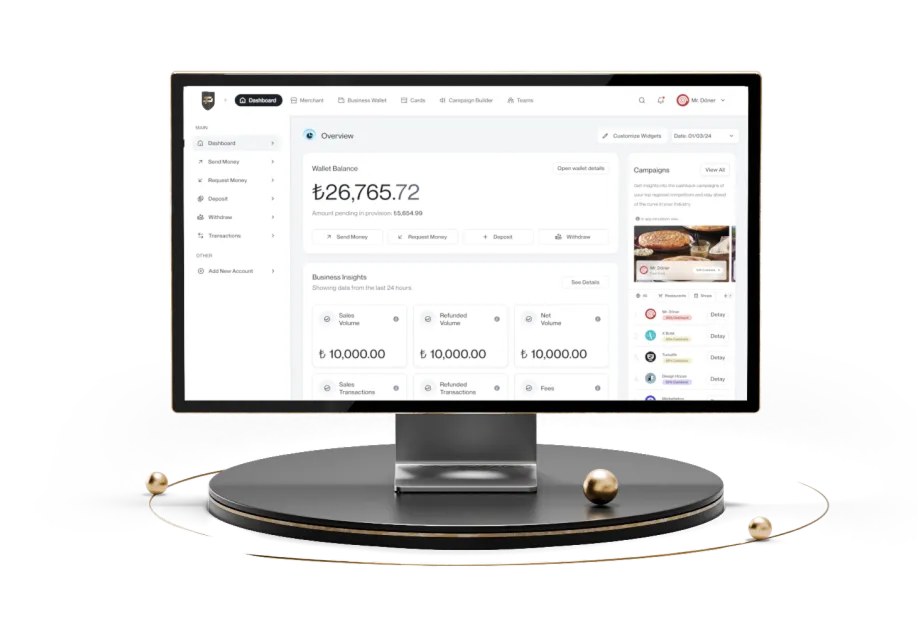What is the BIST 100 Index? How Is It Calculated?
For investors who want to monitor Turkey’s stock market closely, the BIST 100 Index is an indispensable reference point. Bringing together the largest and most liquid companies, this index is not only a strong indicator of the overall market direction but also serves as a guide in investment decisions. So, what exactly is the BIST 100, how is it calculated, and how can investors benefit from this index? In this article, you can find all the details you’re curious about — from the calculation method and stock selection criteria to differences from the BIST 30 and available investment tools.
What is BIST 100 (XU 100)?
The BIST 100 Index (XU 100) comprises the 100 stocks with the highest market capitalization and trading volume listed on Borsa Istanbul. It is the most critical indicator reflecting the overall performance of Turkey’s capital markets. The BIST 100 Index, which includes companies from various sectors and represents market diversity, is market-cap weighted, meaning that larger companies have a greater impact. With its high trading volume and market value, it provides a liquid investment environment for investors. It serves as a barometer for those seeking to track the overall performance of Turkey’s stock market. It also serves as a reference point for evaluating portfolio performance. This list includes distinguished companies from various sectors in Turkey, such as Turkish Airlines and Koç Holding. You can access the complete list on the official Borsa Istanbul website.
How is the BIST 100 Index calculated?
The BIST 100 Index, which reflects the performance of the 100 most extensive and liquid stocks traded on Borsa Istanbul, is calculated based on the “free float market value.” Each company’s weight in the index is determined by its share price, total number of shares, and the ratio of shares in free float (i.e., those held by investors). In other words, the contribution of each stock to the index is calculated using the formula: share price × number of shares in circulation × free float ratio. These values are then summed and divided by a constant known as the “index divisor,” which is periodically updated to reflect market actions such as mergers, bonus share issues, or dividend payments. This prevents sudden price changes from artificially inflating or deflating the index. Calculations are made in real-time by Borsa Istanbul, providing investors with a reliable indicator of market direction. Moreover, every quarter (January, April, July, and October), the companies included in the index are re-evaluated based on liquidity, market value, and trading volume.
How are stocks in the BIST 100 Index determined?
The BIST 100 Index, comprising the largest and most liquid 100 companies listed on Borsa Istanbul, is updated quarterly through evaluations conducted by Borsa Istanbul. The main criteria for selection are the company’s market capitalization, trading volume (liquidity), and free float ratio. In other words, for a stock to be included in the BIST 100, it must be actively traded by investors and have a sufficient proportion of shares in circulation. Additionally, these stocks must be classified as Group A or B and be traded on the Star Market.
What does it mean to be a BIST 100 company?
Being a BIST 100 company is a significant indicator of a company’s reliability, size, and investability on the stock exchange. These companies generally operate in sectors that drive the Turkish economy and attract investor interest. Inclusion in the index increases a company’s visibility, helps it gain a greater share in portfolios, and draws attention from foreign investors. As a result, being listed in the BIST 100 is a prestigious classification and also serves as an indicator reflecting overall market trends.
Papel meets the needs of businesses with Solutions for Large Enterprises and Companies, making life easier.

What is the difference between the BIST 100 and BIST 30 Index?
While the BIST 100 comprises the top 100 largest A and B group companies listed on the Borsa Istanbul, the BIST 30 selects the top 30 companies within this pool based on market capitalization and trading volume. Therefore, the BIST 30 is a narrower segment with higher liquidity; nevertheless, it is entirely encompassed within the BIST 100. Both indices are reviewed and updated quarterly (January, April, July, and October) based on the number of shares in free float and trading volume.
When does the BIST 100 Index change?
The composition of the BIST 100 Index changes both in real-time, based on intraday price movements, and periodically, every three months, through scheduled evaluations. Throughout the day, the prices and free float shares of the stocks in the index are constantly monitored, and based on this data, the index value is automatically recalculated within seconds. Additionally, Borsa Istanbul reviews the BIST 100 Index quarterly, in January, April, July, and October. During these periodic updates, companies are re-evaluated based on criteria such as trading volume, market capitalization, and free float ratio. Companies that no longer meet the requirements are removed, and new ones that do are added. This ensures that the BIST 100 continues to represent the largest and most liquid companies in the Turkish stock market.
How can you invest in BIST 30, BIST 50, and BIST 100?
BIST 30, BIST 50, and BIST 100 indices cannot be bought or sold directly, as they are not stocks but rather indicators that measure the performance of selected companies based on specific criteria. However, investments can be made by tracking these indices. One of the most common ways is to invest in exchange-traded funds (ETFs) that directly track the index. Another option is to invest in mutual funds offered by portfolio management companies that focus on index stocks. These funds can be purchased through brokerage firms or the digital investment platforms of banks. Additionally, investors can create their portfolios by selecting individual stocks from the BIST 30, 50, or 100 indices, thereby achieving performance similar to that of the overall index.
Resources: 1.
This blog post contains general information, not legal, financial, or investment advice. The content is prepared for informational purposes only, and you are advised to seek professional advice for your specific circumstances. The expressions in this article do not carry any binding nature or responsibility and reflect only the author’s evaluation. All your decisions are your responsibility, and Papel Electronic Money and Payment Services Inc. accepts no liability for any consequences arising from them.


